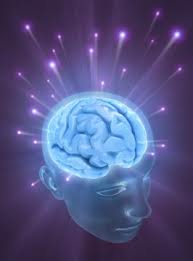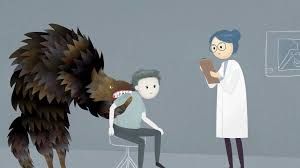IF YOU HAVE ANY OF THE FOLLOWING:
- Fibromyalgia
- Irritable bowel syndrome
- Migraine headache
- Chronic fatigue
- Pelvic pain,
- Chronic fatigue syndrome and its variants,
- Temporo-mandibular joint disorder.
- Post-surgery. It can occur in up to 15% of people following a surgical procedure,
- Other chronic pain conditions such as rheumatoid arthritis, MS and osteoarthritis
It is likely this is due to Central Sensitisation.
What is Central Sensitisation and what can be done about it?
Central refers to the central nervous system in the brain and spinal cord. Central sensitisation is a “sensitised nervous system”. Up until the neuroscience of pain became widely understood many individuals with widespread pain and fatigue were labelled as having a mental illness to explain these symptoms. This mental health cause and concept has now been debunked but it is still a widely held belief in the community and unfortunately, this belief will take some time to abate.
Central sensitisation is the process by which the brain has adapted, over time, to overreact to the normal signals of movement/pressure/temperature etc and the brain “misinterprets ” this information and sends a protective signal – pain. Pain that persists beyond 3 months becomes less about tissue injury and more about nervous systems maladaptation.
Below are links to 4 videos to learn about this complex and pervasive syndrome.
Video 1. Dr Christopher Sletten senior researcher from the Mayo Clinic. Dr Sletten from the MAO Clinic also describing in graphic form the nervous system pathways of central sensitisation.
Video 2. Dr Dan Clauw a leading rheumatologist and researcher. He titled these lectures: “Is it in their head?” because this is where the brain is. Here is the link to the lecture
Video 3. Unlearn your pain Dr Scheubener is a clinician with 25 years experience teaching this topic.
Unlearn your Pain: Chronic pain is a debilitating and very common condition. Tension headaches, and lower back and neck pain are listed among the top 10 leading causes of disability around the world, with billions of people experiencing pain on a recurring basis. Studies show that up to 50 percent of the population might experience chronic pain conditions during their lifetime. The latest breakthroughs in neuroscience and clinical practice could unlock game-changing approaches to treating chronic pain: a complete elimination of pain instead of “managing” it as a chronic condition. Dr. Howard Schubiner, a medical researcher, clinician and author of Unlearn Your Pain, will review new forms of treatment for various chronic pain conditions including, but not limited to, lower back, neck, arms, legs, or general pain conditions like fibromyalgia and chronic fatigue syndrome.
Video
or
Podcast
Listen on Apple Podcasts: https://podcasts.apple.com/au/podcast/commonwealth-club-of-california-podcast/id976334034?i=1000483652437
How to desensitise the brain through Neuroplasticity
Now that we understand the pathways that lead to central sensitisation we also have some good news.
It is now possible to achieve central de-sensitisation.
Brain research shows that is possible to unlearn chronic pain.
The condition of central sensitisation is pain that persists well after any injury that caused acute pain has healed. It is as if the body has forgotten how to turn off the signals which become a repeated experience.
The nervous system is constantly being trained and can learn new patterns throughout life. This is neuroplasticity, the ability to retrain the brain.
Developing new nervous system patterns and networks is how we master any skill such as playing tennis, riding a bike, juggling and playing the piano.
The more we practice the better we get.
We also know that if we let the practice lapse the nervous system can become “rusty” and sometimes we lose the skill completely.
It is now possible that just as the brain has learned to amplify and sustain the experience of pain when an injury has resolved the brain can be desensitised.
The cycle of chronic pain
The brains of chronic pain sufferers become wired in such a way that the brain networks are amplified (hard wired) by the individual who is unintentionally and repeatedly focusing on pain and/or the anticipation of pain.
Thinking about pain worsens the pain.
When pain worsens, anxiety grows, further increasing the pain …and so on.
Video 4.
Here is a short video about the brain and pain by one of Australia’s leading pain researchers.
How to train the brain
An important aspect of management is to train the individual to :
- Perceive and discern when electrical stimuli indicate a threat to the body and when they do not.
- Change the focus of awareness to restore “calm” within the nervous system.
Central de-sensitization is the process by which, as a result of this training, neuroplasticity can occur. The outcome is that brain becomes more flexible and adaptable, even structurally changed, to respond differently, over time.
By reducing or ceasing the attention on the experience of pain, the pain networks weaken.
To do this requires:
* being aware of and being able to direct thoughts away from the focus on pain,
* reducing stress and anxiety levels which has the effect of weakening the pain networks and hence the experience of pain. This then lowers anxiety and reduces stress which further lowers the experience of pain.
PODCAST

Meditation and how it helps chronic pain.
The powerful role of meditation in pain extinction is its proven ability to help accept or even observe our thoughts and thereby learning to direct our attention away from any stimulus such as pain or discomfort.
It has also been shown through meditation, that we can redirect our attention from our default mode activity of the brain, (our automated thoughts that are based in habits and patterns) by introducing images to our brain through visualisation and other engagements with our senses.
This exciting new knowledge has been developed by some of the world’s leading exponents of neuroplasticity, the extraordinary ability to reshape and reprogram our neural structures.
Meditation training.
Our meditation course is on hold during the pandemic. This is now replaced by
The More Than Meditation Audio Guide is a self-paced meditation program that can assist this process.
Our meditation course which is aptly titled “More Than Meditation” is a course that has been developed to particularly assist those with chronic illnesses and in particular Centralised Sensitisation Syndrome.
In this course, effective exercises and tools are provided to participants to address STRESS, ANXIETY, FATIGUE, SLEEP and PAIN in an easy and accessible manner.
The More than Meditation Course has as one of the goals a focus on pain extinction. The More Than Meditation Audio Guide is a self-paced meditation program that can assist this process.


